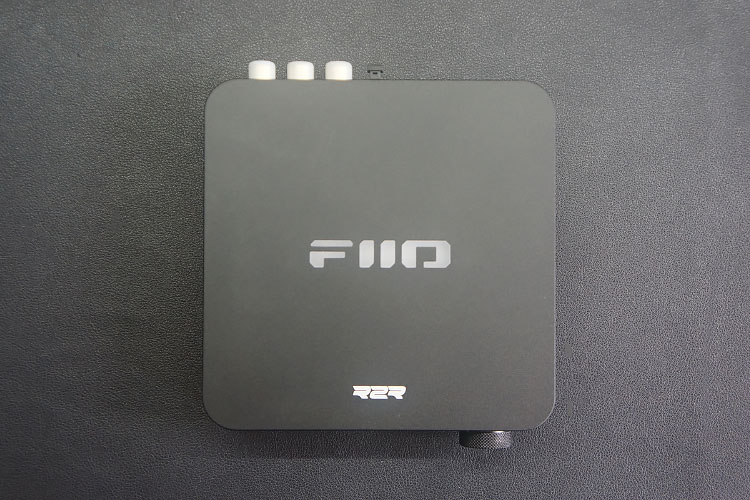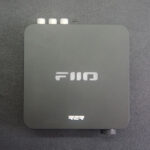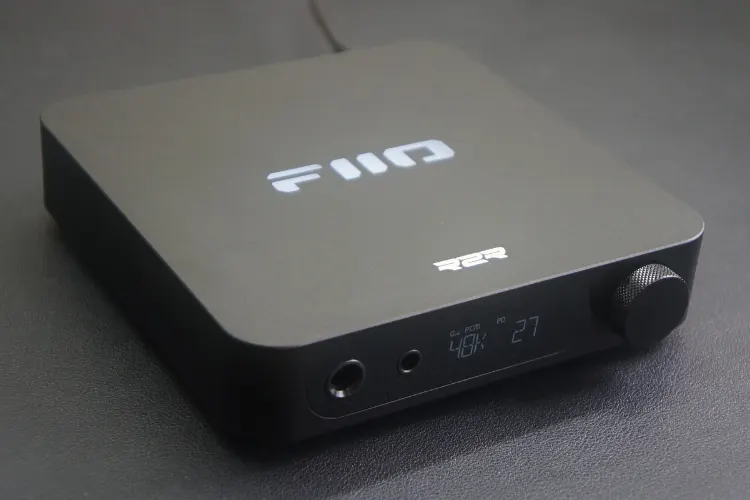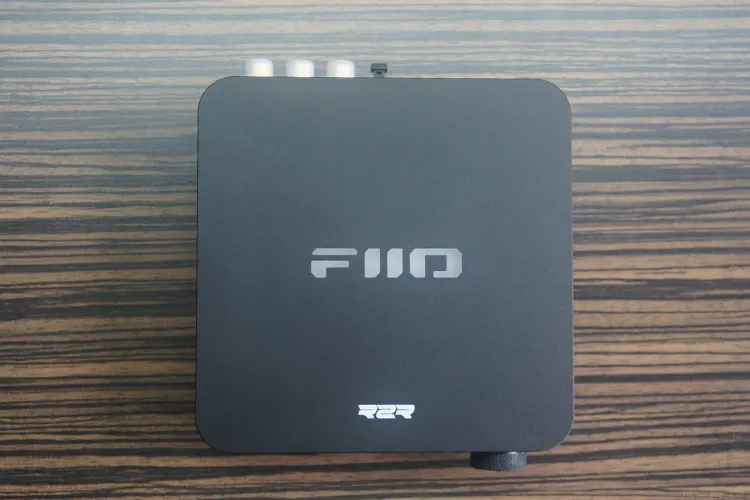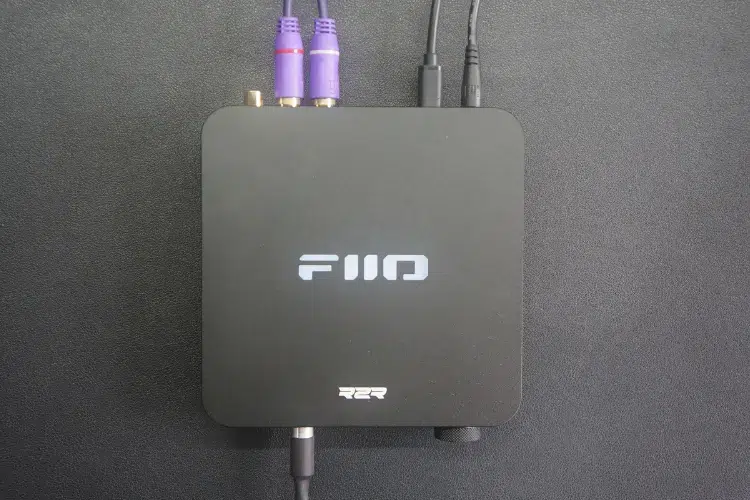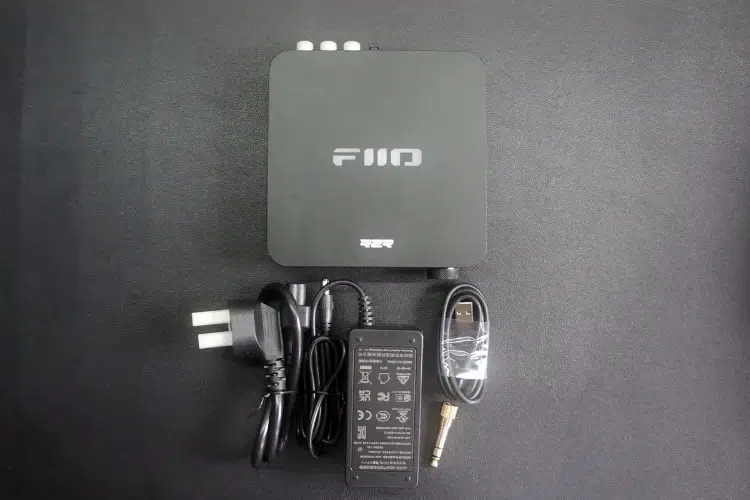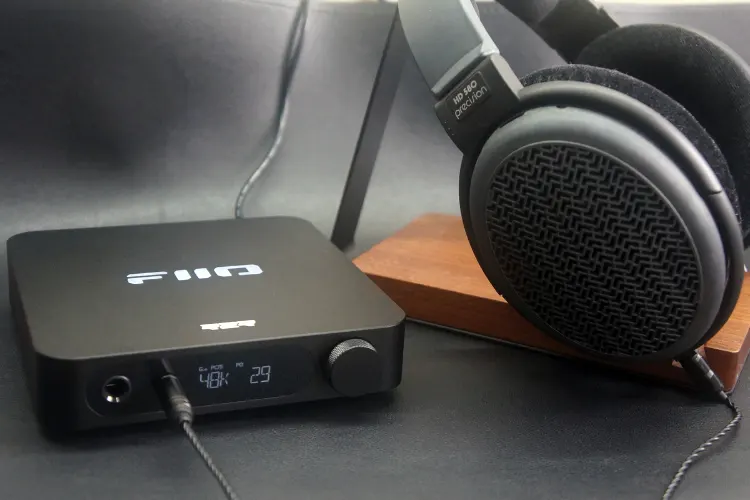Today, Meldrick reviews the FiiO K11 R2R, which is one of the most affordable integrated R2R DAC and headphone amplifiers currently on the market. It is priced at $169.99.
Disclaimer: This was sent to me as a sample in exchange for my honest opinion. Headfonics is an independent website with no affiliate links or services. I thank FiiO for its support.
You can click here to learn more about the FiiO audio products we have previously covered on Headfonics.
Note that this post follows our current scoring guidelines which you can read in more detail here.
The recently launched FiiO K11 R2R is a fresh interpretation of last year’s compact FiiO K11 desktop DAC and headphone amplifier, a unit that won our 2023 Bang for the Buck Desktop DAC/AMP winner.
The K11 R2R swaps the original’s Cirrus Logic DAC chip for an R2R or Resistor Ladder, a DAC configuration rarely seen in modern desktop amplifiers at this price point.
Priced at $169 or $40 more than the original K11, I recently put it through its paces to assess its performance and see how it would fare against the competition to determine if affordable R2R is a game changer at this level.
Features
This K11 R2R’s claim to fame is its use of an in-house R2R or Resistor Ladder DAC, instead of the Delta-Sigma DACs found in most modern consumer devices.
Despite being less performant based on paper specs, R2R DACs have a reputation for recreating a more organic and natural sound signature.
The DAC comprises a dual ladder array of 192 matching precision thin-film resistors at 2x 48 per channel and is capable of decoding up to PCM 384kHz/24bit and DSD256.
FiiO equipped this unit with two well-known R2R sampling options, No Over Sampling (NOS) and Over Sampling (OS), letting the listener switch between a more organic and natural sound signature or a clearer and more technically proficient sound signature.
The K11 R2R can deliver up to 1300mW @32Ω via its balanced output, and a more modest 400mW @32Ω via its SE output.
This is less than the original K11 but is still quite impressive for the price range. Considering the additional 3 gain levels this opens up the ability to power a wide range of headgear.
Design
The colors, fit, and material choices used in the K11 R2R are almost identical to the ones used on the original K11.
The K11 R2R opts for a sleek design that fits well on any desktop setup. The body is made of aluminum alloy with an anodized finish. This gives it a utilitarian appeal that pairs well with computers and laptops of an ‘Apple nature’.
The K11 R2R is available in black and silver, with a soon-to-be-released red version coming out soon. The review unit sent to us is in a black color scheme.
The front panel has a large volume knob that also serves as a multifunction button, with a 4.4mm balanced output and a 6.35mm single-ended output lying on the other end of the facia.
Next to it is a VA LED Panel for vital information such as the volume level and playback details. The back panel has a USB Type-C input, an optical input, a coaxial input, and an RCA line-out.
Coming in at 147 x 32 x 133 mm with a weight of 420g, the unit’s compact chassis easily fits even in cramped desks and racks.
The top of the unit is dominated by a large, light-up, stylized FiiO logo, adding flare to the otherwise barebones silhouette of the unit. The logo can be adjusted with 5 brightness levels, and 8 different colors, or turned off altogether.
The bottom of the unit also comes with a rubber pad that spans the length of the unit, ensuring the unit stays stable even when placed on slippery surfaces.
I/O
The K11 R2R has a variety of inputs and outputs that make it compatible with different sources and devices.
Its single rear USB-C input supports up to 32-bit/384kHz PCM and DSD256 decoding and does not require a driver on Windows systems on Windows 10 and above, as well as macOS systems.
The USB-C port can be connected to computers, smartphones, and other sources via the included USB-C to USB-A cable. However, when connecting my iPhone 14 to the K11 R2R via the Apple-provided USB-C-to-Lightning cable, it failed to recognize the K11 R2R.
The unit also has a coaxial input and an optical input on the rear panel that can be used to connect to streamers, CD players, and other digital sources, as well as RCA outputs on the rear panel that can be used to connect to powered speakers or amplifiers.
The optical and coaxial inputs support up to 24-bit/192kHz PCM decoding. It must be noted that the coaxial input jack can also act as a coaxial output, allowing it to connect to external DACs.
The K11 R2R has two headphone outputs: a balanced 4.4mm output and a single-ended 6.35mm output. The balanced specs have a higher power rating and noise floor than the single-ended output.
Controls
The K11 R2R has an intuitive control scheme that is simple enough for daily usage. The digital volume knob is also a multifunction button that can be pressed, rotated, or long-pressed to perform different functions.
A short press enters the source selection setting, where rotating the knob cycles through USB, Optical, and Coaxial inputs.
A double press switches the unit’s output between the headphone output, pre-out, and line-out.
A useful feature of the unit is its ability to remember separate volume settings for the headphone output and the line output. The addition of a volume-controllable pre-out is an upgrade over the original K11.
The LED screen is easily visible in both bright and dark environments, however, it is also not distractingly bright in dimly lit rooms because of the LCD’s 3 brightness options, and the option to have the screen switch off after a user-defined set of minutes.
Lastly, a long press opens the main menu of the unit, and rotating the knob shows the different available settings including Gain level, pre-out, or line-out options, the sampling modes, and various environmental, LCD, and power controls.
Packaging & Accessories
The K11 R2R comes in a grey cardboard box with a picture of the device on the front and key specifications on the back. Inside the box, you will find the K11 R2R unit, a USB Type-C to USB-A cable, An AC power cable, a user manual, and a warranty card.
The accessories are the minimum needed for operation with a USB-based source such as a computer. A lack of an optical or coaxial cable makes it incompatible with some CD players and streamers ‘out of the box’.
Sound Impressions
The following sound impressions were made with the Sennheiser HD 580 Precision and MOONDROP Blessings 3 as my main headphone and IEM pairings.
Bass
The K11 R2R has a warm-sounding timbre that creates a laid-back and relaxing sound signature, at the expense of some micro detail and mid-range dynamics.
Bass hits are decently punchy on the K11 R2R, not quite to the same texture and impact level of more neutral and powerful amplifiers such as the Topping L30 II, but it is sufficient enough to deliver thumping notes that are felt instead of heard.
The warmth of the R2R DAC shows itself in the mid-bass region, wherein bass guitar strums are played with a lush authority and organic-sounding harmonics.
This contributes to a relaxing listening experience where all hopes of critical listening melt away, with the DAC/AMP instead forcing the listener to simply relax.
In simpler balladic tracks with only a few instruments occupying the mid-range, the K11 R2R paints a wider sound stage as deep synths and bass guitars have a more enveloping shape to them.
Mids
The mid-range performance of the K11 R2R is more of a mixed bag, with string instruments and keys having less note weight and a diminished sense of resolution.
Compared to more neutral sources, the R2R’s mid-range presentation sounds dull and one-dimensional. String instruments can feel compressed and claustrophobic on the K11 R2R, with each note strum or keypress feeling like it is struggling to find space within more complex mixes.
Vocals have a warmer presentation and a more intimate sound stage, depending on the headphone pairing, vocals have a more emotional and lush presentation on the K11 R2R.
Aside from the enjoyable warmth, the K11 R2R also tames down some sibilance and sharpness from S and T vocal tones.
Treble
The K11 R2R has a relaxing treble presentation that minimizes fatiguing in simpler tracks but also struggles to articulate micro-detail and air compared to more neutral sources.
Well-mastered cymbals and chimes in simpler arrangements never came off as fatiguing, however, they did not playback any microdetail as well.
In more complex tracks with multiple high-end instruments all playing at once, they tend to blend into a distorted mess.
This creates a sense of sibilance and shrillness in less proficiently mastered tracks. In extreme cases of such, I found myself pausing the music altogether as it started to hurt my ears.
In simpler, better-mastered tracks, the treble does its job of accenting the music, but it never stands out or wows the listener. In less ideal situations, it causes a jumbled blend of sharp tones that can sound fatiguing.
Staging and Dynamics
The imaging is not class-leading by any means, with string instruments sounding compressed in more complex mixes, but in its OS setting, it is decent enough for most genres of music with less complex mid-ranges.
With its warm sound signature and intimate vocal presentation, the K11 R2R paints a soundscape of a wide mix of thick bass and synths playing far and wide, and a vocalist singing intimately close to the listener.
Instruments in the bass region have good dynamics, coming off with good note weight and authority. However, instruments in the mid-range and treble regions only have average levels of dynamics, even in the OS setting.
NOS vs OS
The K11 R2R comes with 2 sampling modes that have a significant impact on the sound.
The No Over Sampling (or NOS) setting maintains the original sampling rate of the R2R DAC quoted as “preserving an organic sound experience”. The Over Sampling (or OS) setting samples the signal up to 384kHz for a “superior and more refined sound”.
In practice, I found this description by FiiO to be quite accurate. The NOS setting gives the sound signature a more organic and relaxing sound quality, similar in style to a tube amplifier, albeit with less intensity.
This comes at the expense of mid-range and high-end resolution, especially in more complex mixes.
The OS setting still has a warm sound signature, however, it greatly improves string instrument dynamics while introducing better micro detail and sparkle.
The overall sound signature is less relaxing than the NOS setting, however, I found that it yielded a more complete sound signature with fewer compromises.
The R2R on its OS setting does not match the technical proficiency and neutrality of other DAC/AMPs such as the original K11, but its acceptable mix of technicalities and warmth made it my preferred setting.
Click on page 2 below for my recommended pairings and selected comparisons.

